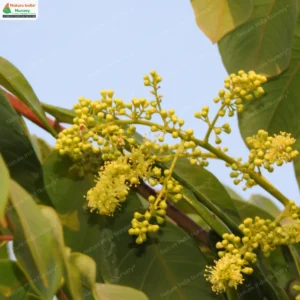Thespesia populnea, commonly known as the Indian Tulip Tree, is a medium-sized evergreen tree that can grow up to 20 meters tall. It features a dense crown and greyish bark. The leaves are heart-shaped, glossy, and leathery, measuring 3-5 inches across. Bell-shaped, pale yellow flowers with maroon or purple centers turn purplish-pink as they age, and the fruit is a spherical, woody capsule containing seeds.
Habitat
Native to tropical coastlines, Thespesia populnea is adapted for oceanic dispersal and growth in island environments.
Planting and Care
-
Propagation: Propagated through seeds soaked in water overnight to soften the hard outer coating before sowing, or through cuttings taken in early spring or late summer.
-
Soil Type: Prefers well-drained loamy to sandy loam soil.
-
Watering: Requires regular watering during initial growth stages but is drought-tolerant once established.
Additional Information
-
Economical Values:
-
-
Medicinal Use: Used in traditional medicine for treating various ailments such as skin diseases and digestive issues.
-
-
-
Ornamental Use: Valued for attractive foliage in gardens and urban landscapes.
-
-
Wildlife Significance:
-
-
Food for Insects: Flowers attract pollinators like bees and butterflies.
-
-
-
Food for Birds: Birds feed on nectar, insects, and fruits, with the fruits being a particularly nutritious food source.
-




